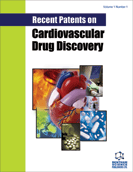Abstract
An elevated plasma level of homocysteine (HCY) is associated with increased risk of thrombotic and atherosclerotic vascular disease. Several studies and recent patents have demonstrated that hyper-homocysteinemia (HHCY) is an indipendent risk factor for vascular disease. An elevated homocysteine level has been also reported to be a risk factor for the development of congestive heart failure (CHF) in individuals free of myocardial infarction. Animal studies showed that experimental HHCY induces systolic and diastolic dysfunction, as well as an increased BNP expression. Moreover, hyperhomocysteinemic animals exhibit an adverse cardiac remodeling characterized by accumulation of interstitial and perivascular collagen. The mechanisms leading from an elevated HCY level to reduced pump function and adverse cardiac remodeling are a matter of speculation. Existing data indicate that direct effects of HCY on the myocardium, as well as nitric oxide independent vascular effects, are involved. Preliminary data from small intervention trials have initiated the speculation that HCY lowering therapy by micronutrients may improve clinical as well as laboratory markers of CHF. In conclusion, HHCY might be a potential etiological factor in CHF. Future studies need to explore the exact pathomechanisms of HHCY in CHF. Moreover, larger intervention trials are needed to clarify whether modification of plasma HCY by B-vitamin supplementation improves the clinical outcome in CHF patients.
Keywords: Homocysteine, congestive heart failure, ventricular remodeling, collagen, hyper-homocysteinemia, thrombotic and atherosclerotic vascular disease
 31
31


